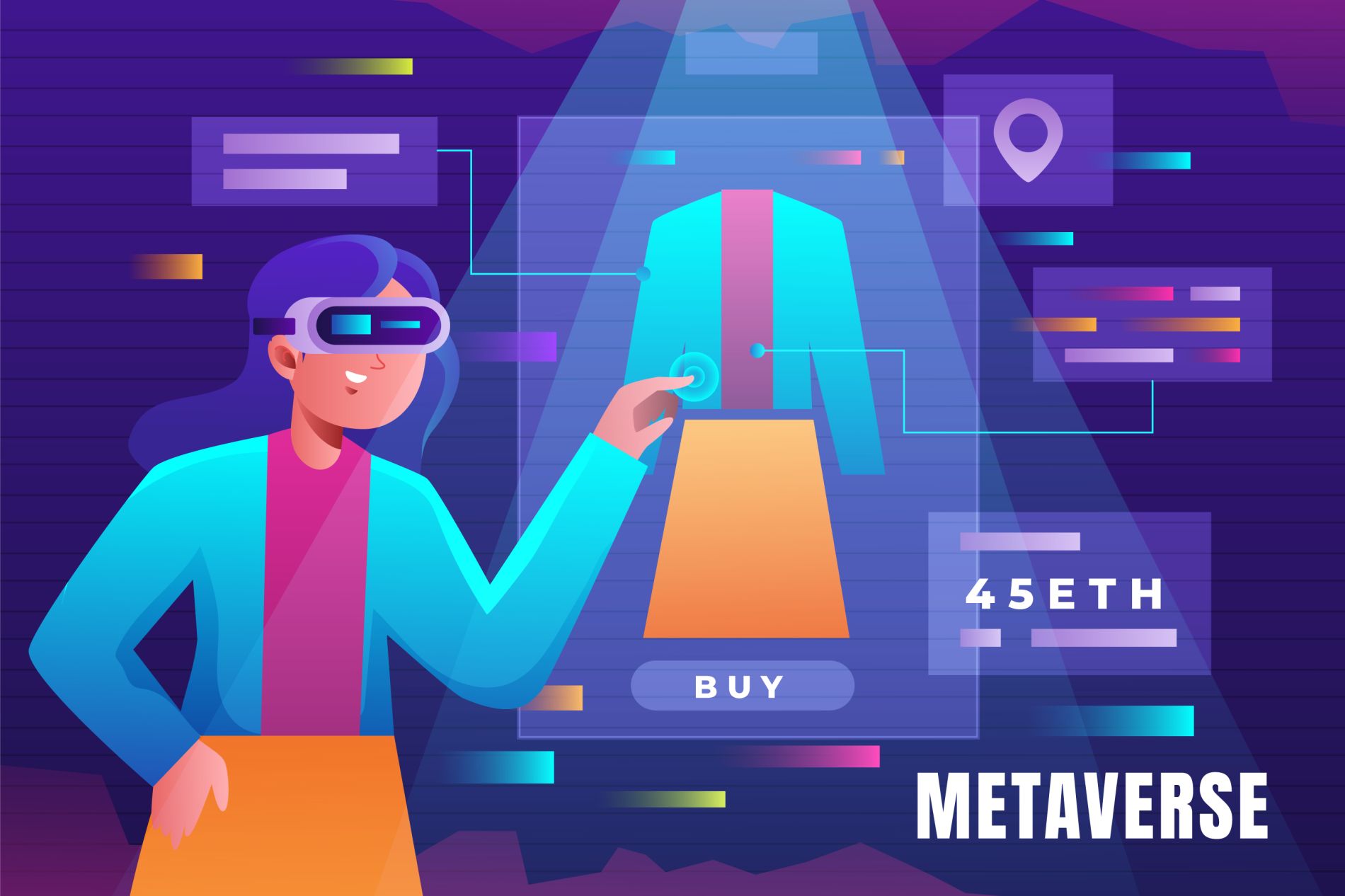Article Content:
1. Integration of AI at All Levels of
E-Commerce
2. AR and VR in E-Commerce
3. Enhanced AI-Generated Instructional
Content
4. Integration of Social Media with
E-Commerce
5. Growth in Retail Media Advertising
Spend
6. Sustainable Practices and Eco-Friendly
Products
7. Voice Commerce
8. Hyper-Personalization in E-Commerce
9. Rise of Automation and AI in
Operations
10. Increasing Competition Among Sellers
As an Amazon seller, you always need to stay ahead of the trends to maintain a competitive edge and boost your sales. If you are looking for new ideas to revamp your marketing strategy, pay attention to the following 10 trends that are shaping the future of e-commerce on Amazon:
1. Integration of AI at All Levels of E-Commerce
 |
The emergence of ChatGPT and OpenAI has brought AI to the forefront of public awareness. This has led to numerous repercussions in e-commerce solutions and ongoing innovations across various fields.
Research indicates that the global AI market in social media will reach $7.19 billion by 2027. AI is increasingly being integrated into various aspects of e-commerce, from customer service to product recommendations and advertising. Businesses that fail to leverage AI will face significant disadvantages.
Examples of AI Integration at All Levels of E-Commerce:
- Personalized Customer Experience: AI algorithms analyze customer data, including previous purchases, browsing history, and search queries, to offer personalized recommendations and relevant content. This increases the likelihood of purchases by displaying products customers might be interested in.
- Inventory Management: AI systems predict product demand in different regions at different times, optimizing inventory levels. This ensures popular items are always in stock while reducing excess inventory that can lead to increased costs.
- Dynamic Pricing Optimization: Flexible pricing strategies are employed through AI. Prices can fluctuate based on demand, availability, competitor pricing, and other market factors, ensuring competitiveness and profitability.
- Supply Chain and Logistics Optimization: AI tools forecast demand and plan the most efficient delivery routes. This reduces shipping time and costs, improves customer satisfaction, and minimizes the environmental impact of shipping.
Sprout Social's research shows that 53% of consumers expect immediate responses from brands on social media. Amazon is addressing this with an AI-powered search bar set to launch as early as June 2024, offering consumers enhanced, personalized search suggestions.
In 2024, e-commerce is expected to become increasingly personalized as AI-driven recommendations become prevalent across the industry. Businesses recognize that integrating AI in e-commerce not only enhances operational efficiency but also enables sellers to work more effectively.
AI is a crucial component in all successful social media applications, a trend showing no signs of slowing down. Therefore, businesses must continuously monitor AI developments to leverage its benefits and maintain customer satisfaction.
2. AR and VR in E-Commerce
 |
In 2024, technological advancements extend beyond AI, with AR and VR predicted to continue shaping the industry. Currently, 40% of U.S. consumers find AR helpful for online shopping, with 34% stating it encourages their online purchasing trends.
Examples of Virtual and Augmented Reality in E-Commerce:
- Virtual Try-Ons: Amazon has implemented AR features allowing customers to virtually try on clothes, glasses, or accessories. This helps customers visualize how products will look and fit, enhancing decision-making and reducing returns.
- AR View in Shopping App: Amazon's mobile app includes an AR View feature, enabling customers to visualize products in their living spaces before purchasing. For example, customers can see how a piece of furniture will fit and look in their room.
- VR Showrooms: While more futuristic, VR Showrooms could immerse customers in a fully digital environment where they can explore products in a lifelike setting. Amazon could use this for various product categories, offering a more interactive shopping experience.
- Interactive Product Manuals: Using AR, Amazon can provide interactive product manuals, allowing customers to scan products with their phones and receive detailed information, instructions, or troubleshooting tips.
According to a recent study by Meta:
- Role of AR in E-Commerce: 20% of consumers believe AR will play a significant role in the future of e-commerce.
- Role of AR in Retail: 14% of consumers believe AR will play a role in future retail commerce.
- Role of AR in Wholesale Commerce: 13% of consumers believe AR will play a role in future wholesale commerce.
Amazon's integration of AR and VR into e-commerce sets industry standards. Its commitment to enhancing customer engagement, reducing online shopping uncertainties, and personalizing the customer journey highlights the immense potential of these technologies.
3. Enhanced AI-Generated Instructional Content
 |
AI's ability to quickly generate effective copy will lead to an increase in instructional content for products and services, offering more engaging and personalized shopping experiences. E-commerce platforms can use AI more effectively by analyzing customer data, providing highly personalized shopping experiences.
This includes tailored product recommendations, content, and special offers customized to match each customer's preferences and behavior patterns. Creating relevant instructional content, crucial for large marketplace sellers, is expected to be significantly simplified by AI in 2024.
Examples of Increased AI-Generated Instructional Content:
- Personalized Learning Paths: AI can analyze user interactions, learning pace, and preferences to create customized learning paths. For example, users interested in photography can receive a series of specific articles or tutorial videos tailored to their skill level and interests.
- Interactive Guides: AI can create interactive guides that adapt in real-time based on user feedback. For example, a cooking app can provide step-by-step instructions, adjusting recipe difficulty or ingredients based on the user's cooking experience and available kitchen tools.
- Automated Content Creation: AI algorithms can generate how-to guides on various topics by aggregating information from multiple sources. This can range from household repairs to programming tutorials, all tailored to the user's knowledge level and preferences.
AI in marketing has increased efficiency and personalization, leading to more effective and cost-efficient strategies. This innovation is reshaping the role of marketing in data analysis and posing significant ethical and privacy challenges. Continuous advancements in personalized marketing, ethical AI use, and AI integration across all marketing channels are expected for a more comprehensive strategy.
4. Integration of Social Media with E-Commerce
.png) |
The growth of social media seems relentless, and 2024 will follow this trend. However, a notable expansion is predicted in e-commerce on social media platforms. According to Bizfly's research, online stores using social media have an average sales increase of 32% compared to those without. As services like TikTok Shop and Shopee
ompete for development, these apps are becoming ideal destinations for consumers seeking unique and trendy products.
Examples of Increased Integration of Social Media with E-Commerce:
- Shoppable Posts: Platforms like TikTok Shop and Shopee offer shoppable posts where businesses tag products in their photos or videos. Users can click on these tags to view product details and make purchases without leaving the app.
- Live Shopping Events: On platforms like TikTok Shop and Shopee, brands host live shopping events where viewers can watch product demonstrations and make purchases in real-time directly through the platform.
- In-App Checkout: Social media platforms are integrating in-app payment features, allowing users to complete purchases without being redirected to external websites. This streamlines the buying process and keeps users engaged with the platform.
The trend of integrating and enhancing e-commerce features extends beyond social media platforms. In 2024, Amazon sellers and affiliates should be ready to adapt and sell across multiple platforms, ensuring a seamless and accessible shopping journey for customers.
5. Growth in Retail Media Advertising Spend
 |
With numerous advertising avenues competing for a share of the marketing budget, brands and advertisers increasingly focus on determining what works best, how, and in what ways. Amazon's retail media advertising spend is projected to continue growing rapidly, reaching nearly $60 billion by 2024, making it the fastest-growing advertising spending channel.
Examples of Growth in Retail Media Advertising Spend:
- Increased Investment in Sponsored Product Ads: Amazon's Sponsored Product Ads have become increasingly popular among sellers. These ads appear in search results and product detail pages, boosting visibility and sales. Spending on these ads has risen as more sellers recognize their effectiveness.
- Expansion of Sponsored Brands and Sponsored Display Ads: Besides product-specific ads, there is increasing investment in Sponsored Brands (ads promoting entire brands) and Sponsored Display Ads (appearing on and off Amazon based on user interests). These ad types allow broader brand awareness and are attracting more advertising spend.
- Growing Use of Amazon DSP: Amazon DSP enables advertisers to programmatically buy display, video, and audio ads. The increased use and spending on Amazon DSP indicate a shift towards more targeted and automated advertising campaigns.
Amazon has built a robust advertising ecosystem, allowing brands to reach their target audience throughout the customer journey, from product discovery to purchase.
6. Sustainable Practices and Eco-Friendly Products
 |
As awareness of environmental issues grows, consumers increasingly seek eco-friendly products and sustainable practices. For Amazon sellers, integrating sustainability into your business approach can attract the expanding market of environmentally conscious customers.
Examples of Sustainable Practices and Eco-Friendly Products:
- Biodegradable and Compostable Products: Sellers offering products made from natural materials, such as biodegradable phone cases or compostable kitchenware, help reduce plastic waste and environmental impact.
- Reusable and Refillable Items: Products like reusable shopping bags, refillable cosmetic containers, and water bottles are highly popular, encouraging consumers to reduce single-use items.
- Eco-Friendly Packaging: Many Amazon sellers are switching to sustainable packaging solutions, using recycled materials, minimizing packaging size, and avoiding plastic whenever possible.
- Energy-Efficient Electronics: Selling energy-efficient devices and electronics, such as LED lights and low-energy kitchen appliances, caters to environmentally conscious consumers.
The average annual spending of Prime subscribers is $1400, a notable figure. Amazon's sales network spans over 20 countries, generating impressive sales in a short time. 2200 Amazon businesses also have an extensive business network with 2200 businesses and delivery affiliates spread across the U.S. with a significant number of drivers. These examples demonstrate the growing trend among Amazon sellers to adopt sustainable measures and offer eco-friendly products, meeting the demands of consumers increasingly aware of their environmental impact.
7. Voice Commerce
 |
Voice-activated devices are becoming increasingly integrated into our daily routines. The ease of voice shopping is expected to drive the voice commerce movement in 2024. Adjusting your product listings for voice search can give your business a distinct advantage.
Examples of Voice Commerce:
- Voice-Activated Shopping: Users can simply talk to their Alexa devices to search for products, add items to their cart, and even place orders on Amazon. This hands-free shopping experience is particularly convenient for repeat purchases like groceries or household essentials.
- Reorder and Purchase Recommendations: Alexa can suggest products based on users' previous purchases. For example, if a user regularly orders a specific brand of coffee, Alexa can remind them when it's time to reorder or suggest trying a new brand.
- Voice-Based Order Tracking: Customers can use voice commands to check the status of their orders or track shipments through their Amazon Echo devices.
- Voice-Activated Coupons and Deals: Shoppers can ask Alexa about ongoing deals and discounts on Amazon. This feature can alert users to sales or special offers related to their shopping habits.
Amazon's Echo devices, powered by the voice-activated virtual assistant Alexa, have become household staples. Amazon seamlessly integrates its e-commerce platform with Alexa, allowing users to shop, reorder products, and check order status using voice commands.
8. Hyper-Personalization in E-Commerce
.jpg) |
2024 is marked by the trend of hyper-personalization in e-commerce. Shoppers increasingly prefer personalized shopping experiences. By customizing product recommendations, marketing information, and customer interactions, businesses can significantly improve customer satisfaction and loyalty.
Examples of Hyper-Personalization in E-Commerce:
- Personalized Product Recommendations: Amazon uses complex algorithms to analyze customers' previous purchases, browsing history, and search queries to recommend products most relevant to their preferences and needs.
- Customized Homepage Displays: When users log into their Amazon account, they are greeted with a homepage tailored to their shopping habits, including sections for products they might like and deals in categories they frequently browse.
- Targeted Email Marketing: Amazon sends personalized emails to customers, suggesting products and deals based on their previous interactions on the site, increasing engagement and purchase likelihood.
- Dynamic Pricing: Using AI, Amazon can adjust prices in real-time based on various factors, including customers' purchase history, demand, and market trends, to offer competitive and personalized pricing.
These examples illustrate how Amazon uses hyper-personalization to create a more engaging, convenient, and effective shopping experience, leveraging data and AI to cater to each customer's unique preferences and needs.
9. Rise of Automation and AI in Operations
 |
Automation is not a relic of the past; it is the foundation of the future. Moving into 2024, using artificial intelligence for functions such as inventory control, pricing strategies, and customer support will be crucial. Adopting automation tools can streamline your operations, freeing up more time for planning and strategic decision-making.
Examples of the Rise of Automation and AI in Operations:
- Automated Warehouses: Amazon uses sophisticated robots and automated systems in its warehouses to speed up packing and shipping processes. These robots can sort, pick, and transport products, reducing the time and labor required for these tasks.
- AI for Inventory Management: AI algorithms predict product demand, helping Amazon optimize inventory levels. This reduces overstocking or stockouts, ensuring popular items are always available.
- Dynamic Pricing Algorithms: Using AI, Amazon adjusts product prices in real-time based on demand, availability, competitor prices, and other market factors. This helps maintain competitiveness and maximize profitability.
These examples highlight Amazon's commitment to leveraging automation and AI across various operational aspects, enhancing efficiency, improving customer experience, and innovating in e-commerce management and logistics.
10. Increasing Competition Among Sellers
 |
With the growing number of sellers on Amazon, the competitive landscape is becoming more challenging, emphasizing the importance of sellers standing out by offering exceptional products and experiences.
Examples of Increasing Competition Among Sellers:
- Enhanced Product Listings: Sellers are investing more in high-quality images, detailed descriptions, and SEO optimization to make their listings stand out in a crowded marketplace.
- Competitive Pricing Strategies: Many sellers use dynamic pricing tools to adjust their prices in real-time, responding to market demand and competitor prices to stay competitive.
- Expanded Product Lines and Variations: To differentiate themselves, sellers are expanding their product ranges, offering more variations in size, color, and features to appeal to a broader customer base.
- Increased Spending on Marketing and Advertising: Sellers are increasing their budgets for Amazon-sponsored ads and external marketing channels to boost visibility and drive traffic to their products.
These strategies reflect the diverse ways sellers are adapting and innovating to remain competitive in an increasingly crowded and dynamic e-commerce environment. The e-commerce landscape is ever-changing, and it's crucial for sellers to adapt to maintain their competitive edge. By adopting these latest trends, Amazon sellers can attract customers, increase sales, and grow their businesses.
See more:
KFC "Shocks" with Insight in Marketing: Strategies that "Hit" Customer Psychology
Should You Choose Video Marketing or Influencer Marketing? A Million-Dollar Question for Businesses in the Revenue Race
IMC Plan - Secrets to "Capturing" Customer Psychology & Conquering the Market!
TRÒN HOUSE
